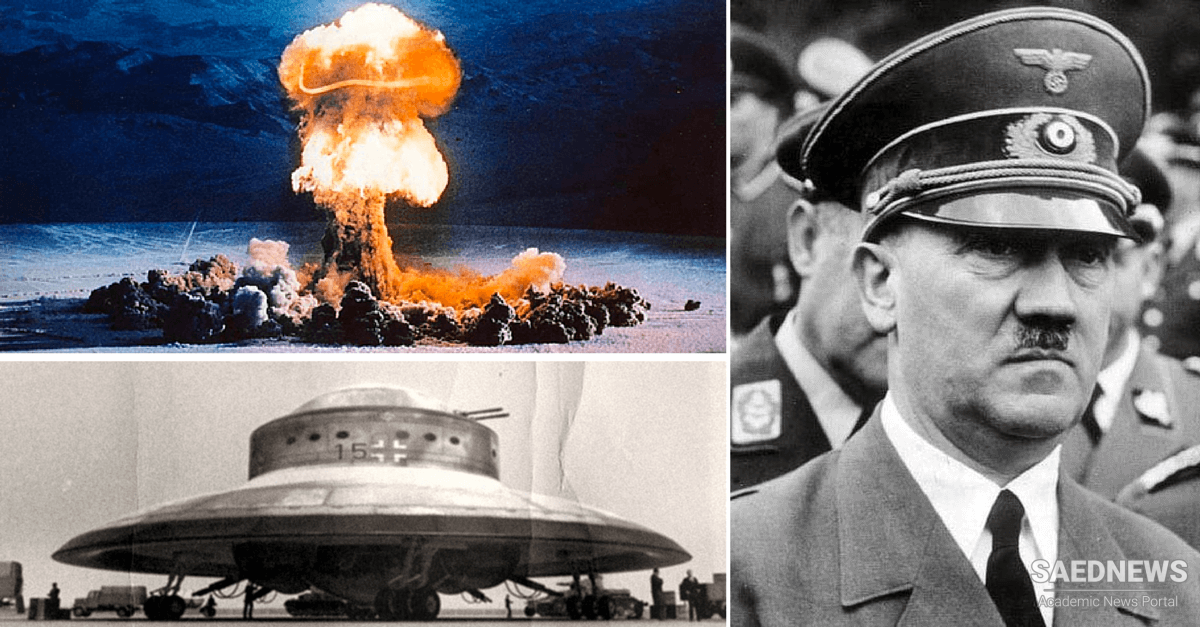Leading scientists in this field were assembled from the Allies and from the distinguished refugees from Nazi and Fascist oppression. International cooperation in science on this scale was unparalleled and has not since been matched. The objective was to develop knowledge and processes relating to nuclear energy and to make an atomic bomb. Two kinds of fissile material were chosen, uranium-235 and plutonium-239, an artificially made element with atomic number 94. Small quantities of the latter had been produced on a laboratory scale, but this was quite inadequate.
Enrico Fermi, who had come over from Italy, designed and built at Chicago University the first nuclear reactor in which plutonium could be produced by a controlled reaction. It was a historic moment on 2 December 1942 when the reactor first went critical, that is, the chain reaction continued spontaneously. The Project reached its objective. Two atomic bombs were dropped on Japan in August 1945, bringing the war to a swift conclusion and raising two mushroom-shaped clouds that have haunted mankind ever since.
The spirit of international co-operation and exchange of knowledge did not long survive the war and soon each country with the will and the means pursued its own programme of research and development. In Britain, two bodies under the Ministry of Supply were set up in 1946, to carry out research, which was the prime purpose of the establishment at Harwell, and to manufacture atomic bombs. It was decided that the plutonium route to the bombs would be more practicable and economic than the U-235 route; two large graphite-moderated, air-cooled reactors were constructed at the Windscale site in Cumbria and early in 1952 began to produce plutonium which was then passed to the weapons establishment at Aldermaston. In October of that year Britian’s first nuclear weapon was tested. More plutonium was needed and design started on a second station alongside Windscale, known as Calder Hall.
Here, it was decided to make use of the heat generated by the process and compressed carbon dioxide was circulated by powerful fans through the reaction vessel and through boilers to produce steam, which could drive a conventional electric generator. To do this, it had to work at a higher temperature than Windscale; among various design changes, the cladding of the uranium-metal fuel rods had to be altered from aluminium to a specially developed alloy of magnesium, known as Magnox, a word that came to be applied to the power stations based on the Calder Hall design.
In October 1956, the Queen opened Calder Hall, the world’s first commercial atomic power station. The British government announced a programme, the world’s first, for building atomic power stations, and by 1971, eleven had been constructed on the Magnox pattern with a combined output of electric power of some 4000MW. In 1964 a further programme was begun, to build power stations with an improved reactor developed from the Magnox—the Advanced Gas-cooled Reactor (AGR). Working at a much higher gas temperature and pressure, these gave steam conditions and performance matching the most efficient oil and coal-fired stations. Changes in the materials used had to be made to enable them to withstand the more demanding conditions; instead of cladded uranium metal fuel, uranium oxide pellets were used.
Meanwhile the USA was pursuing a different line to the same end. The requirement to create small reactors for powering submarines determined the development of the Pressurized Water Reactor (PWR), in which water under high pressure acted as both moderator and coolant. Even so, the temperature of the water had to be kept below 280°C to ensure it did not boil. In the less demanding conditions of on-shore power stations, the water was allowed to boil and the steam passed direct to the turbo-generator—the Boiling Water Reactor (BWR); one drawback is that the water becomes somewhat radioactive and so special precautions are needed in the turbine as well as the reactor area.
Through vigorous promotion, the American system has been more widely taken up by other countries than the British. France at first followed the British in using Magnox reactors but changed over to PWRs from the mid-1960s. The Soviet Union early entered this field, achieving a nuclear explosion in 1949. Again, power generation was first based on Magnox but in view of the Soviet nuclear-powered submarine programme, moved over to PWR. A unique application here is the nuclear-powered ice-breaker.
Many countries embarked on nuclear energy programmes in the 1960s and 1970s, and by the end of 1986 there were 394 nuclear reactors producing electricity in 26 countries, with more under construction. Nuclear power accounts for over 15 per cent of world electricity production, although there is considerable variation between one country and another. In a number of countries, the proportion is very small. In the USA it is just over 16 per cent, Britain rather more at around 20 per cent, while France and Belgium attain nearly 70 per cent.


 New Iranian device prevents amputation of diabetics
New Iranian device prevents amputation of diabetics














































